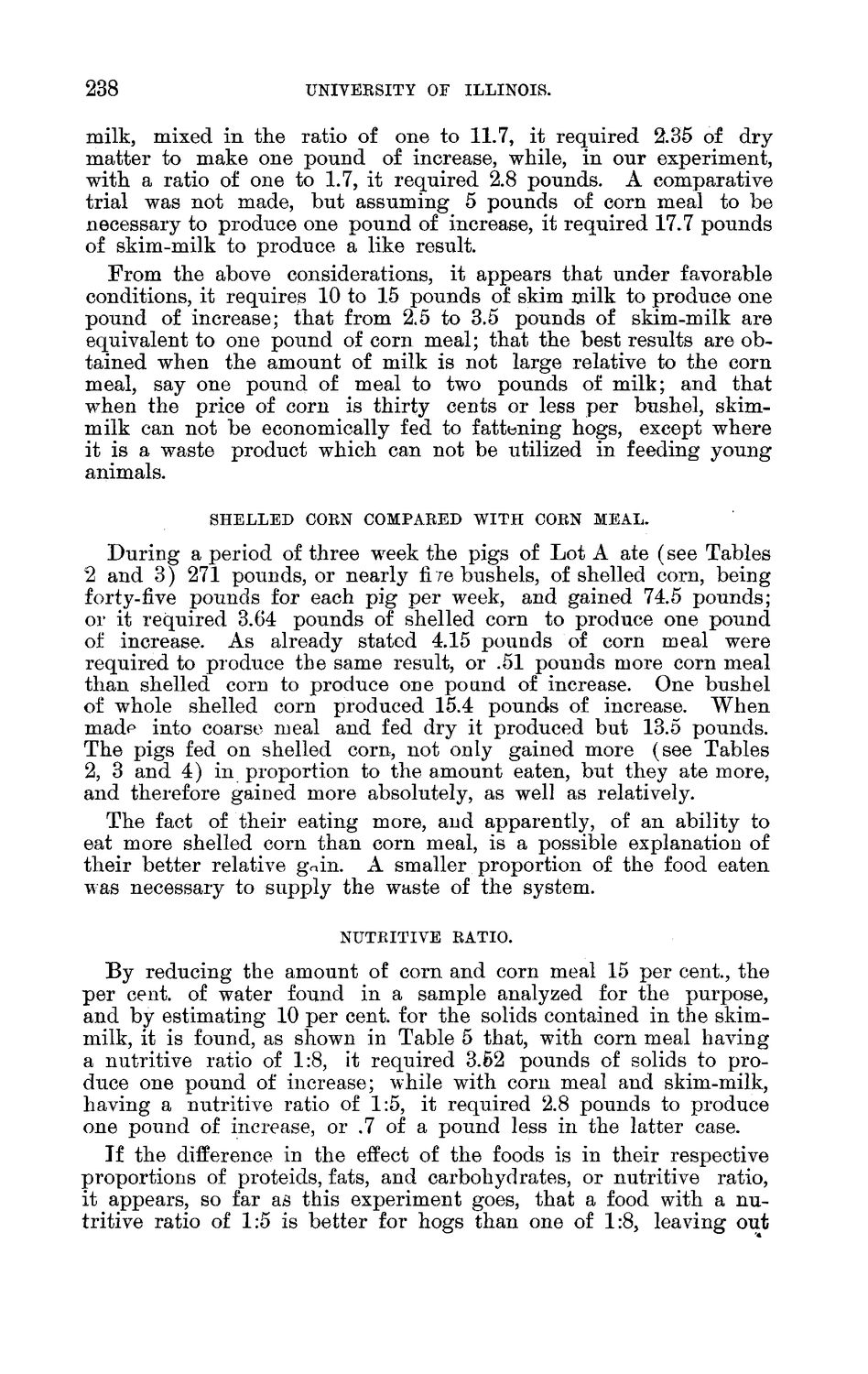| |
| |
Caption: Board of Trustees Minutes - 1888
This is a reduced-resolution page image for fast online browsing.

EXTRACTED TEXT FROM PAGE:
238 UNIVERSITY OF ILLINOIS. milk, mixed in the ratio of one to 11.7, it required 2.35 of dry matter to make one pound of increase, while, in our experiment, with a ratio of one to 1.7, it required 2.8 pounds. A comparative trial was not made, but assuming 5 pounds of corn meal to be necessary to produce one pound of increase, it required 17.7 pounds of skim-milk to produce a like result. From the above considerations, it appears that under favorable conditions, it requires 10 to 15 pounds of skim milk to produce one pound of increase; that from 2.5 to 3.5 pounds of skim-milk are equivalent to one pound of corn meal; that the best results are obtained when the amount of milk is not large relative to the corn meal, say one pound of meal to two pounds of milk; and that when the price of corn is thirty cents or less per bushel, skimmilk can not be economically fed to fattening hogs, except where it is a waste product which can not be utilized in feeding young animals. SHELLED CORN COMPARED WITH CORN MEAL. During a period of three week the pigs of Lot A ate (see Tables 2 and 3) 271 pounds, or nearly fi re bushels, of shelled corn, being forty-five pounds for each pig per week, and gained 74.5 pounds; or it required 3.64 pounds of shelled corn to produce one pound of increase. As already stated 4.15 pounds of corn meal were required to produce the same result, or .51 pounds more corn meal than shelled corn to produce one pound of increase. One bushel of whole shelled corn produced 15.4 pounds of increase. When made into coarse meal and fed dry it produced but 13.5 pounds. The pigs fed on shelled corn, not only gained more (see Tables 2, 3 and 4) in proportion to the amount eaten, but they ate more, and therefore gained more absolutely, as well as relatively. The fact of their eating more, and apparently, of an ability to eat more shelled corn than corn meal, is a possible explanation of their better relative gain. A smaller proportion of the food eaten was necessary to supply the waste of the system. NUTRITIVE RATIO. By reducing the amount of corn and corn meal 15 per cent., the per cent, of water found in a sample analyzed for the purpose, and by estimating 10 per cent, for the solids contained in the skimmilk, it is found, as shown in Table 5 that, with corn meal having a nutritive ratio of 1:8, it required 3.52 pounds of solids to produce one pound of increase; while with corn meal and skim-milk, having a nutritive ratio of 1:5, it required 2.8 pounds to produce one pound of increase, or .7 of a pound less in the latter case. If the difference in the effect of the foods is in their respective proportions of proteids, fats, and carbohydrates, or nutritive ratio, it appears, so far as this experiment goes, that a food with a nutritive ratio of 1:5 is better for hogs than one of 1:8, leaving out
| |